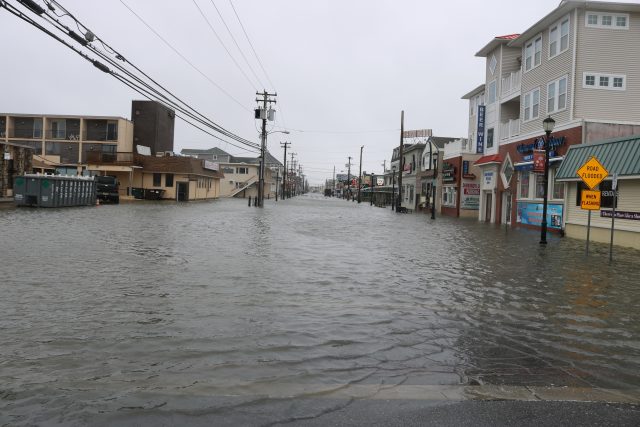
By DONALD WITTKOWSKI
Sea Isle City officials consider their community to be among the leaders nationwide in flood-mitigation projects.
The beach resort is among only a few cities in the country to have obtained a “Class 3” community rating within the National Flood Insurance Program, entitling local property owners to a 35 percent discount on their flood insurance policies.
Although Sea Isle officials say the town is a model for flood prevention, they are objecting to proposed state coastal environmental regulations that are designed to address climate change and rising sea levels. They claim the rules are too stringent.
“We know how they’re going to work out. They’re going to be a disaster,” City Council President Jack Gibson predicted about the impact the regulations would have on Sea Isle.
City Council agreed at its meeting Tuesday to draft a resolution formally opposing the new climate control rules proposed by Gov. Phil Murphy and the New Jersey Department of Environmental Protection. Councilman J.B. Feeley initially urged Council to object to the regulations, known as Protecting Against Climate Threats, or PACT.
Councilman William Kehner joined Feeley in criticizing the regulations, saying they would wrongly make shore towns in Atlantic and Cape May counties “guinea pigs” for the state’s environmental policies.
“I’m fully in favor of opposing this state regulation,” Kehner said.
Cape May County’s Board of Commissioners, which oversees the county government, already has adopted a resolution opposing the PACT regulations.
The resolution says the regulations, if implemented, would “significantly devalue land and stymie construction” throughout Cape May County.
The PACT rules would require that new home construction in flood zones should be elevated five feet above the base flood elevation level, according to the resolution.
“Elevating new and substantially improved homes an additional five feet will be prohibitively expensive for our residents and may not even be feasible on many sites,” the resolution says.
Gibson explained that Sea Isle requires that new construction should be two feet above base flood elevation. He said the five-foot elevation proposed by the PACT regulations is too stringent and would have a negative impact in Sea Isle on home construction and possibly even road projects.
“We were already ahead of the curve with two feet,” Gibson said of Sea Isle’s flood elevation requirements.

In defense of the proposed regulations, Gov. Murphy’s administration said the state is “modernizing environmental land use rules to respond to climate change by considering risks such as sea level rise and chronic flooding.”
“Climate change is the single biggest environmental challenge facing the world today. Our State is ground zero for climate impacts, including rising sea levels, more intense and frequent storm events and flooding, and increasing temperature,” the state says on the www.nj.gov/dep/njpact/ website explaining the PACT regulations.
Sea Isle officials, however, say they fully understand the threats to the shore from rising sea levels and are capable of taking their own action to protect the low-lying island from flooding.
City Solicitor Paul Baldini said the shore towns want to continue their own policies to control development instead of having regulations dictated by the state.
Baldini also said the proposed PACT regulations are “dramatically different” than what Sea Isle is used to doing to oversee development and prevent flooding.
Sea Isle officials hope there will be enough formal opposition from towns in Atlantic and Cape May counties to stop the proposed regulations from becoming law.
“With this objection, we’re hopeful we’ll get some results,” Gibson said of Sea Isle’s forthcoming resolution opposing the PACT rules.
Once in danger of being thrown out of the National Flood Insurance Program in 1993, Sea Isle has undergone a dramatic transformation since then and is now ranked as one of the nation’s leading communities in flood prevention.
Ultimately, Sea Isle hopes to accumulate enough points to move up from “Class 3” to “Class 2” status in the NFIP ratings system, which would provide local homeowners with even steeper discounts for their flood insurance policies than the 35 percent discount they receive now.
“We are already one of the few communities in the country with a 35 percent discount,” Gibson said.
Over the years, Sea Isle has implemented a series of major flood-mitigation projects, such as restoring the beaches and dunes, building bulkheads along the bayfront, reconstructing the roads, upgrading the drainage systems and erecting berms, levees and rock walls. It has also built one stormwater pumping station and has plans for more.








